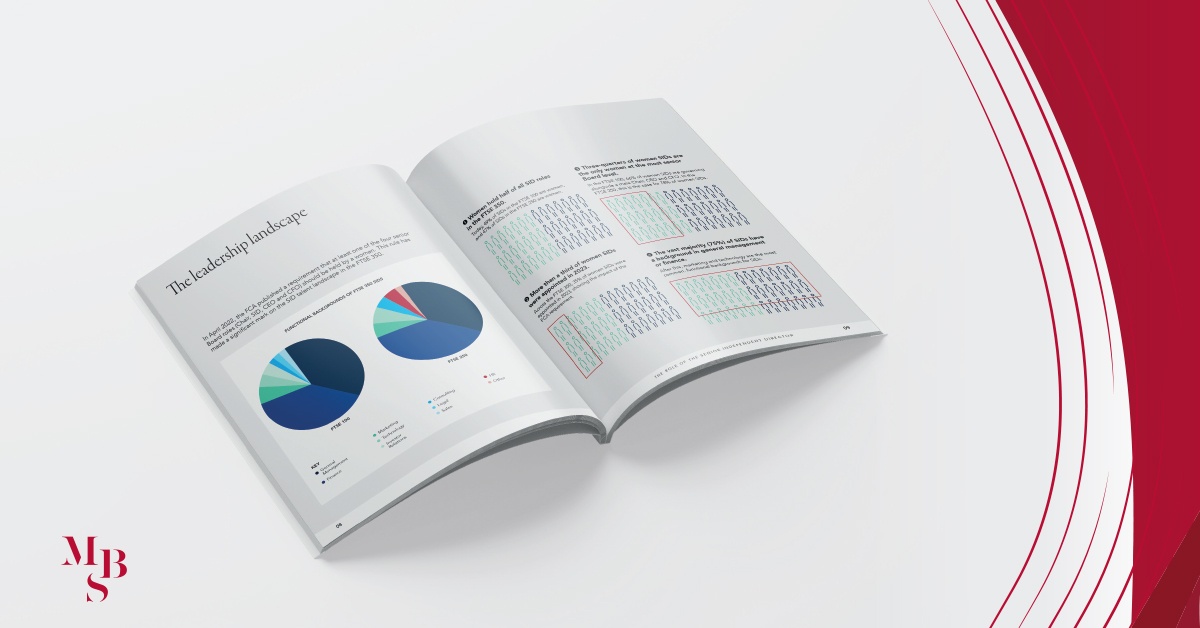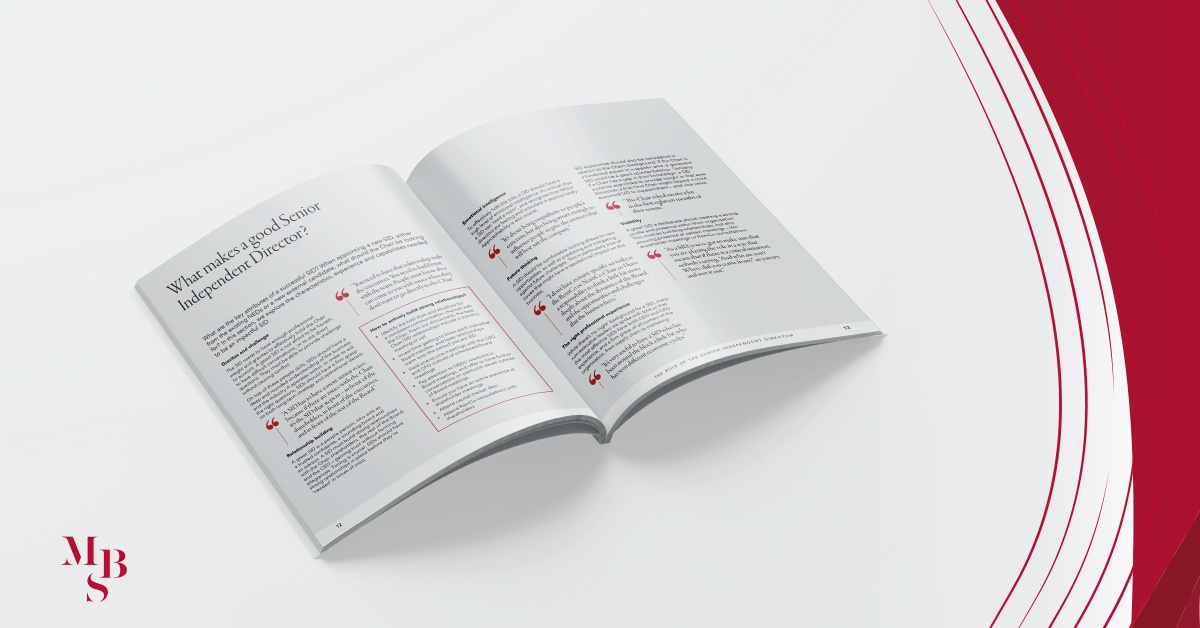In the early 2000s, the UK saw two high-profile business failures. In 2001, the industrial giant Marconi broke records by generating an overall loss of £5bn, following a misguided strategy of acquisitions. Around the same time, insurance firm Equitable Life was found to have mistreated nearly one million current and former policy holders, with a government report finding evidence of a “culture of manipulation and concealment”.
These corporate crises made clear the need for a further layer of governance and accountability. In 2003, the Higgs Review of the UK Combined Code made the formal recommendation for a Senior Independent Director, who could act as an additional check and balance on the Board:
“The board should appoint one of the independent non-executive directors to be the SID, to provide a sounding board for the chair and serve as an intermediary for the other directors and shareholders,” Sir Derek Higgs wrote. “Led by the SID, the non-executive directors should meet without the chair present at least annually to appraise the chair’s performance, and on other occasions as necessary.”
In the past twenty years, the SID has become a critical cog in the non-executive machine – but it’s a role which is full of contradictions and inconsistencies. It’s at once carefully defined and highly ambiguous. A SID must operate independently, but also build strong relationships. They might work behind-the-scenes one day, and act as a mouthpiece for the organisation the next. Their role can vary dramatically depending on the performance of the business, or the leadership style of the Chair.
“In the past twenty years, the SID has become a critical cog in the non-executive machine – but it’s a role which is full of contradictions and inconsistencies.”
The role also represents something of a corporate governance conundrum. If the SID is in place to scrutinise the Chair, should it be the Chair leading the selection and onboarding process? Similarly, if the SID is the natural successor to the Chair, could that impede their ability to provide effective support and challenge?
Over the past few months, my colleague Elliott and I have had the privilege of sitting down with Senior Independent Directors from the consumer-facing sector and beyond to discuss these nuances. We’ve held dozens of conversations, exploring a SID’s key responsibilities, the characteristics of a great SID, and the considerations for Chairs when making an appointment. Our latest white paper – The Power and Purpose of the Senior Independent Director – is the product of these conversations, and the third in my Boards of the Future series.

The SID is, after all, a position that receives relatively little attention. Unlike Chairs or NEDs, SIDs do not have a peer community or a network of advisors. There are very few courses, and no universal framework established for training or onboarding. Throughout our discussions, many SIDs recalled an expectation to just “turn up and do the job,” while others said they had to actively seek out external guidance, or define their own responsibilities.
This oversight should not be taken lightly. As Dr Randall S Peterson, Professor of Organisational Behaviour and Academic Director of the Leadership Institute at London Business School, puts in his excellent foreword to our paper: “I’d contend that failing to sufficiently consider, support, or scrutinise the SID could risk the integrity of our system of corporate governance. It is the SID’s role to facilitate the ultimate function of the non-executive Board: collective responsibility.”
“Failing to sufficiently consider, support, or scrutinise the SID could risk the integrity of our system of corporate governance.” – Dr Randall S Peterson, Professor of Organisational Behaviour and Academic Director of the Leadership Institute at London Business School
So how to best facilitate this collective responsibility? As outlined in the publication, a SID’s success often hinges on their level of emotional intelligence, their ability to build strong relationships, and their excellent judgement. They must be able to provide challenge without creating conflict, foster relationships without forming allegiances, and have an astute ability to read a room. They are increasingly playing the part of a ‘moral voice’, ensuring that the Chair and NEDs are acting in a way that reflects the company’s values.
Many SIDs described their experience as something of a ‘waiting game’, in which they predominately operate behind-the-scenes, before springing into action in a time of crisis. Perhaps what sets excellent SIDs apart from the rest of the pack is their ability to stay proactive during these quiet periods, and not be seen as a figure who only emerges in challenging moments. As one SID put so aptly: “a SID shouldn’t be seen as a fire extinguisher sitting in the corner, only reached for in a disaster.”

As such, excelling as a SID is not straightforward. It requires a firm grasp on the organisation and its industry, as well as an innate understanding of people. There are also practical steps – some of which are outlined in this paper – that SIDs can take to become more effective.
I hope this report will be used as a tool by SIDs to evaluate their own experience and responsibilities, and by Chairs to prompt important reflections on how best to appoint a SID. I’d like to extend my sincere thanks to the Chairs and SIDs who so graciously gave up their time to contribute to this report, and to Professor Randall S Peterson for the invaluable insights shared in his foreword.
You can read the full report here.








